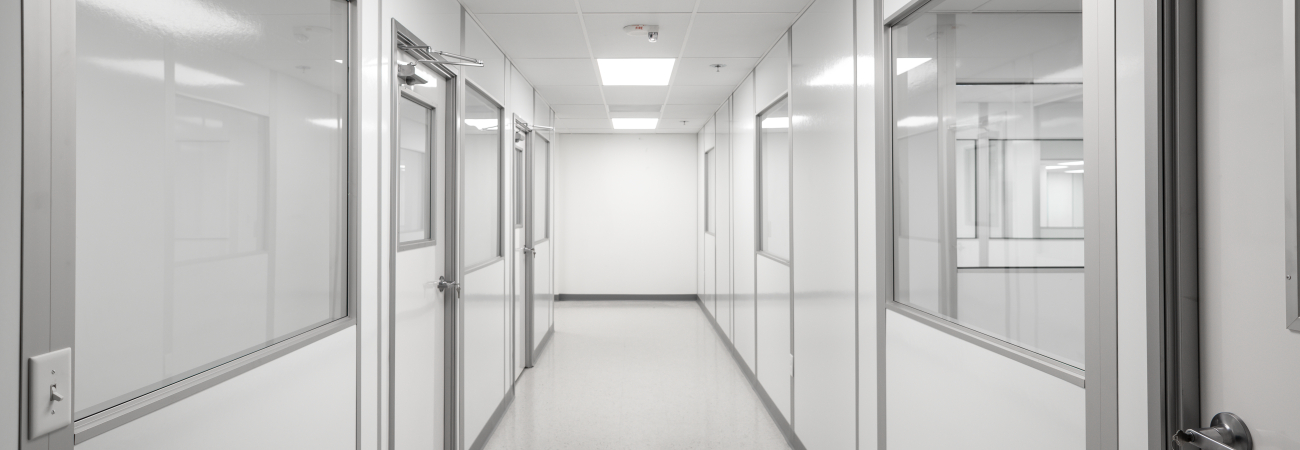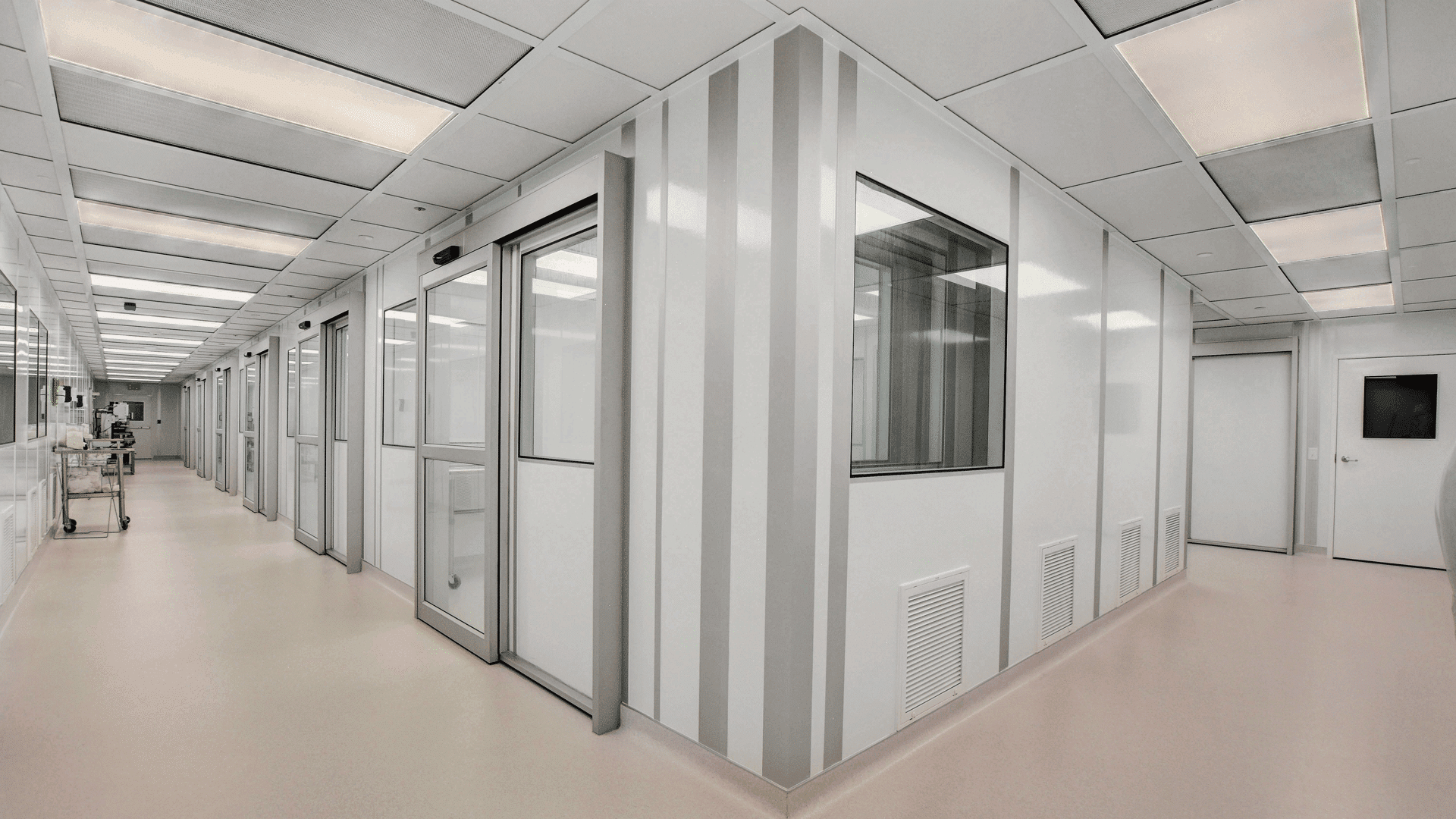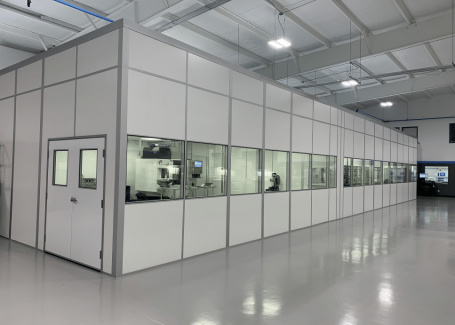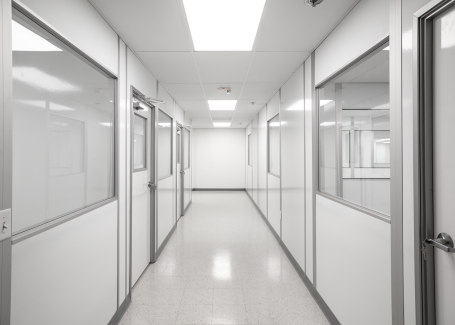Given the high standards for cleanrooms and all their related high-tech features, you’d think that a cleanroom could stay clean on its own. But unfortunately, particles still find their way in and can linger if not for cleanroom cleaning protocols. In this guide, we’ll cover the basics of keeping your cleanroom clean, including practices, cleaning methods, and more.
Cleanroom Entry Protocols That Prevent Contamination
Though entry protocols are not directly part of cleaning a cleanroom, they’re still an important part of keeping your space clean, since through them you prevent contamination from entering in the first place.
It’s common knowledge in the industry that most particles come from people, whether that’s from the particles they themselves shed or ones lingering on clothes and other personal items.
As a result, in just about every cleanroom, staff will have to put on proper gowning based on the cleanroom’s ISO classification and the specific application. This will usually include attire like coveralls, gloves, face masks, caps, and shoe covers, each of which must be put on in a certain order in the gowning area. Hands must also be thoroughly washed and dried before putting on gloves and other attire.
Similarly, tools or equipment brought into the room should be wiped down with special disinfectants, or passed through a special decontamination chamber. Sticky mats are also sometimes placed at entry points to help remove dust and debris from workers’ shoes.
Though the exact procedures will depend on the industry, relevant regulations, and the cleanroom’s specific application, such protocols can help reduce the extent to which a cleanroom needs to be cleaned.
Cleanroom Cleaning Methods: Dry vs. Wet Cleaning
As far as the cleaning itself goes, there are different approaches to cleaning depending on the type of contaminants. That said, cleanroom cleaning often involves two main methods: dry cleaning and wet cleaning. The two are not mutually exclusive, and are often used together.
Dry Cleaning
Dry cleaning is used to wipe up loose particles from surfaces, like dust or dead skin cells. Of course, you don’t want to create even more particles while cleaning, so wipes are usually made of non-shedding materials, often of polyester or microfiber.
HEPA-filtered vacuums also fall into the category of dry cleaning, and help remove surface particles without accidentally pushing them through the air to other places.
Wet Cleaning
Wet cleaning, on the other hand, is used when dry methods aren’t sufficient. It usually means wiping things down with really pure water, like distilled or deionized water, so you don’t leave behind any spots or minerals. It also often involves detergents that are made specifically for cleanrooms, especially ones that don’t leave a film or create bubbles. After surfaces are mopped or wiped with a wetted cloth, they’re dried using lint-free cloths or HEPA-filtered vacuums.
As we already mentioned, both dry and wet cleaning are often used together on a regular schedule. Dry cleaning is used for everyday maintenance, while wet cleaning is better when things get really dirty.
Top-to-Bottom Cleaning
Another important aspect of cleanroom cleaning is how the space is cleaned. You can’t simply start from any point, as this could mean moving particles to places you’ve already cleaned. As a result, cleanrooms are cleaned from top to bottom, or from the ceiling to the floor. This is done because if particles disperse while you’re cleaning, they’ll fall downwards due to gravity.
Daily, Weekly, and As-Needed Cleaning Schedules
As you might expect, how often you clean your cleanroom depends in large part on the ISO classification. Less strict spaces, like ISO 7 or ISO 8, won’t need to be cleaned as often as higher classifications such as ISO 4 or ISO 5.
There are a few cleaning protocols that should be done every day. For instance, floors should be mopped at the start of each shift, and then dried with a HEPA vacuum. Furthermore, surfaces (even the ones not in use), should be wiped down as well. Things like windows, pass-throughs, and door handles will also need cleaning daily.
Some can be done once a week, however. For example, the walls should be cleaned with distilled water and cleanroom-approved cleaners, and equipment and other items should also be wiped down for good measure.
Then there’s other tasks that you may only need to carry out as needed, or once per month. This includes things like cleaning the ceilings, light covers, vents, and air return grilles. It’s also a good idea to review and/or update your SOPs intermittently, if need be. Many regulations require a cleaning log anyway, but it helps track what’s been done already and gets you ready for potential audits.
The Bottom Line
In short, regular cleaning in cleanrooms is unavoidable, despite all the advances in technology. It’s still, regardless of the ISO classification, an integral part of controlling contamination. Using the right methods and sticking to a routine is what keeps your cleanroom doing what it’s supposed to do.






